
All categories
Featured selections
Trade Assurance
Buyer Central
Help Center
Get the app
Become a supplier

(1296 products available)













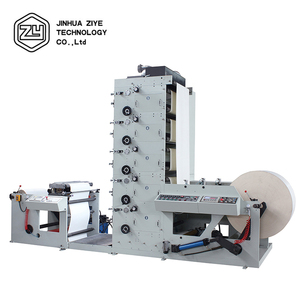
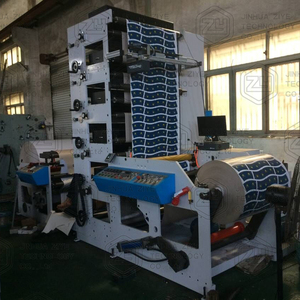



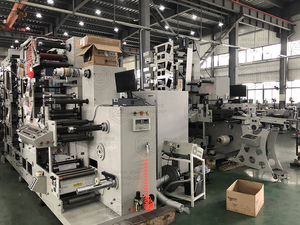





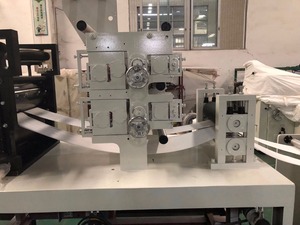
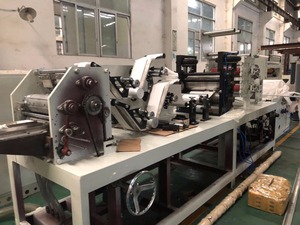

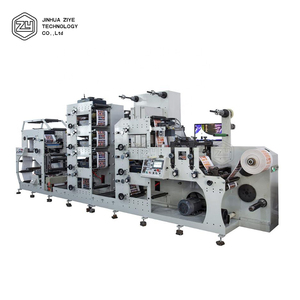









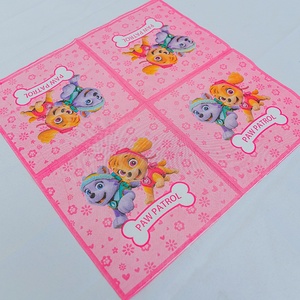



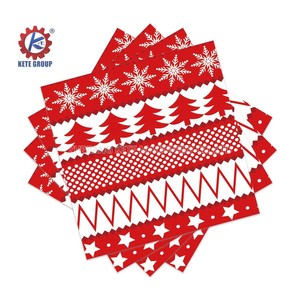

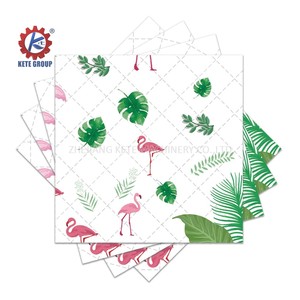

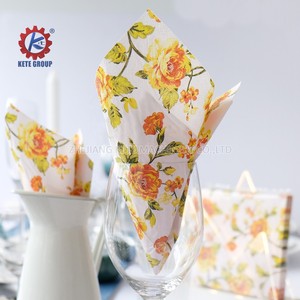


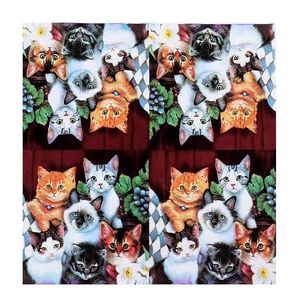


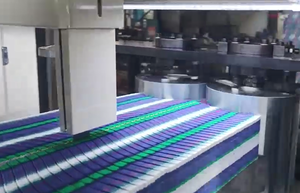
A flexographic print napkin machine can be used in an inline production model or a standalone one. In an inline production model, the printing unit will be integrated into the larger production line. The priming, printing, and napkin-making processes will all be completed in one continuous process without the need for intermediary steps or separate machines. An inline printing process can improve productivity and reduce the costs of feeding paper into the printing machine manually.
For standalone units, the printing unit will be a separate machine from the ones that prime and convert the paper into napkins. This is not to say that the standalone printing machine will not be efficient. Many of these machines are high-speed and capable of printing up to 14,500 strokes per hour. They optimize productivity by allowing operators to quickly change print plates and by having a central control system for all of its printing functions.
Flexographic printing machines can have one of three different printing cylinder types:
The flexo printing machine may be a hybrid model with other printing technologies, such as rotary screen printing. These hybrid machines already fulfill what would usually require different machines to do.
Production speed:
The machine prints and produces napkins at a particular speed, often indicated in pieces per minute (ppm) or per hour. Different models may have various maximum production speeds.
Napkin sizes:
Flexographic printing machines can handle different napkin sizes. This is crucial for the market because customers often want various sizes.
Printing colors:
Number of printing colors refers to how many colors a machine can print. Some machines can print just one color, while others can handle multiple colors, often up to 4, 6, or even 8 color units.
Printing plate material
These consist of photopolymer, rubber, and others, which can affect the durability and print quality of the napkin.
Drive System:
This includes the electric motor, gears, belts, etc, which are used to drive the machine for the printing function.
Power requirements
This is the power required by the machine for printing tasks. It is usually described in voltage and wattage.
Machine dimension:
Flexographic print napkin machines have larger sizes and take up more space compared to other machines. Machine dimensions are usually described in length, width, and height.
Clean:
Cleaning the surface and equipment used to print on napkins is crucial for hygienic and high-quality prints. They should be frequently cleaned to remove ink residues, dirt, etc., to maintain print clarity and prevent faults. Specific cleaning supplies and procedures will be required based on the printing method.
Replace ink:
Flexographic printing requires the substitution of various colors and types of ink. It's important to monitor the ink status and replace or refill it when necessary to ensure printing quality.
Maintain printing plates:
Printing flexographic napkin machines first create images on printing plates. These plates need to be cared for and maintained regularly so they remain undamaged and clean to ensure printing precision and exactness.
Regular calibration:
Flexographic printing machines require regular calibration to ensure accurate printing positions and sizes. This involves adjusting the printing pressure, spacing between printing units, etc. to make sure multi-color printing overlaps correctly.
Inspection and repair of mechanical parts:
Flexographic printing machines have many mechanical parts like motors, gears, belts, etc. and these need periodic inspections and repairs. Check to see if there's any loosening, wear and tear, or damage in these parts, and tight, replace, or repair as needed to keep the machine run smoothly.
The flexographic printing napkin machine applies mainly in the food and hospitality industries. Here are some of the usage scenarios of the machine.
Fast-food industry
Fast-food chains use printed napkins to market their brand. Additionally, they use them to keep customers' hands and faces clean while consuming their foods. Flexographically printed branded napkins can serve marketing and functional roles in a fast-food restaurant.
Food service industry
Restaurants, cafes, and catering services can utilize tailor-made printed napkins for branding. Such napkins can add an elegant touch to table settings. Moreover, they can serve as promotional tools. Flexographic printing gives these establishments an affordable option for incorporating their logos and messages into their napkins.
Meetings and conferences
During social events like meetings, conferences, weddings, and banquets, participants are provided with printed tissue napkins. They are mostly printed with the organizer's logo or a special design for the event. The flexographic printing machine can be used to print branded, customized napkins for such events.
Specialty businesses
Food brands that sell products that require napkin use, like juicy and greasy foods, should probably use printed napkins with their branding. Such brands include fast-food companies, beverage manufacturers, and snack makers. They can incorporate their logos, slogans, or product information onto the napkins to enhance brand visibility and customer engagement. They can also use the flexographic printing technique for promotional campaigns, product launches, or co-branding initiatives in collaboration with specific restaurants or snack companies.
Consider the following parameters when purchasing a flexographic napkin printing machine.
Production Capacity
The primary consideration when purchasing a flexographic printing machine is the production capacity. Buyers must know how many napkins they want to produce and the machine's maximum output. If a buyer needs to print 10,000 napkins daily, they should go for a machine that fulfills that need without causing a bottleneck in production.
Print Quality and Flexibility
Buyers should consider the print quality the machine can deliver. It would also help if they understood the machine's flexibility in handling various types of ink and substrates.
It's necessary to strike a balance between print quality, speed, and cost-effectiveness.
Automation and Control Systems
A modern printing machine should have automated features like web control and tension regulation. Such a feature enhances precision and minimizes manual intervention. Also, consider advanced control systems that allow for quick setup and changes between different printing jobs.
Machine Size and Layout
Buyers must consider the flexographic printing machine's dimensions and layout. The machine's size must fit well within the existing manufacturing facilities. In addition, consider how the printing machine integrates with other production lines, like feeding and packaging systems.
Energy Efficiency
Choose an energy-efficient printing machine to minimize operational costs over time. An energy-efficient machine helps reduce environmental impact.
Cost and ROI
Ultimately, the cost of the printing machine is a major factor in the purchasing decision. It is helpful to consider the total cost of ownership, which includes maintenance and energy consumption.
Supplier Support
Finally, buyers should consider the supplier's support in terms of maintenance, spare parts, and technical support. Go for a supplier with a proven track record and strong customer support network.
Q1: What are the latest advancements in flexographic printing for napkin machines?
A1: The most recent developments in flexographic printing technology for napkin machines include the use of water-based inks, which are more environmentally friendly and produce fewer VOCs; digital workflow solutions that enable faster changeovers and reduce waste; and the integration of inline converting processes such as embossing, cutting, and packaging.
Q2: How do operators ensure consistent print quality when using a flexographic napkin printing machine?
A2: Maintaining consistency in print quality involves regularly monitoring the ink viscosity and adjusting it as necessary; conducting routine machine maintenance and parts replacement; calibrating the printing plates and cylinders; and controlling the printing speed and tension. It is also essential to establish quality control checkpoints throughout the printing process to make immediate adjustments when needed.
Q3: Can flexographic napkin printing machines handle different types of material other than paper?
A3: Flexographic printing primarily works with absorbent and non-absorbing materials like PE-coated paper, plastic films, such as polypropylene and polyethylene, and synthetic materials, like nylon. However, for non-paper materials that require distinct ink adhesion, the surface may need to be pretreatment or coated.
Q4: What is the role of printing plates in flexographic printing, and how are they different from lithographic printing plates?
A4: In Flexographic printing, the printing plates carry the image to be printed. They are made from photopolymer or rubber and are created in a relief format, meaning the image is raised and inked. This is distinct from lithographic printing plates where the image is chemically etched, making them different in creation and function.
Q5: What are the common challenges faced in flexographic printing and how can they be addressed?
A5: Challenges may include inconsistent print quality, color matching problems, ink adhesion issues, and plate wear and tear. These can be addressed by using high-quality materials, performing regular maintenance, and establishing precise control over the printing process. Additionally, staff training and development can help in problem detection and resolution.